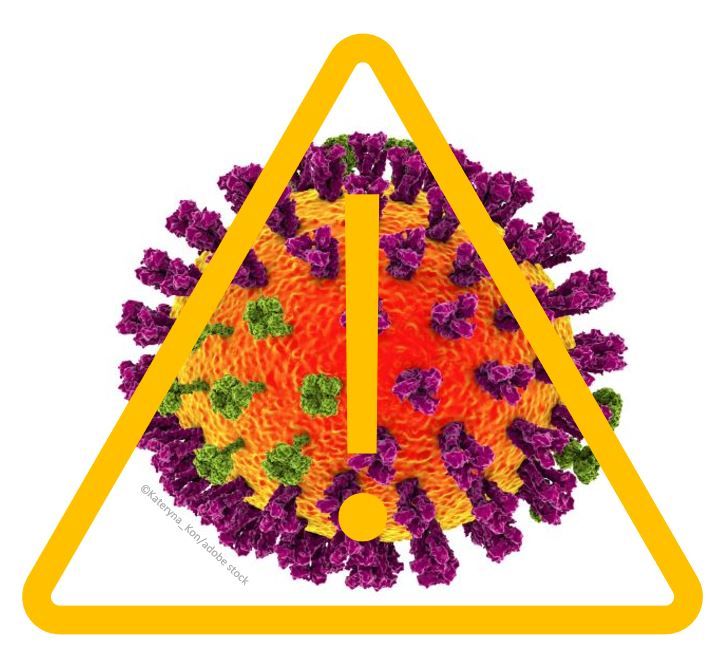Are the Southern Hemisphere's High Influenza Rates a Warning for the North This Year?

Like other countries in the southern hemisphere, Australia saw a lot of influenza during its April to October flu season this year. In fact, it was the worst flu season in 5 years.
The season started earlier than usual, and gave the virus more time to spread, NBC reported, and also affected children more than usual.The southern hemisphere is monitored to try and help predict the northern hemisphere’s upcoming season. What might be in store?
William Schaffner, MD, professor of preventive medicine in both the department of health policy and the division of infectious diseases at Vanderbilt University in Nashville, Tennessee spoke with Patient Care partner site Drug Topics® on the complicated nature of predicting the northern hemisphere’s flu season.
What drove the increased rate of flu in the southern hemisphere?
“A major contributing factor is likely human behavior,” Schaffner said. He said that in previous years, COVID-19 mitigations may have been a factor in reduced flu rates for the prior 2 seasons. A decrease in attendance at social events, children attending school at home, and adults working from home probably contributed, in addition to masks protecting against infection, Schaffner explained. “All of that has changed. Close human interactions now provide an opportunity for influenza to spread much better than it has in the past couple of years,” he said.
"Close human interactions now provide an opportunity for influenza to spread much better than it has in the past couple of years.”
Another possibility is children being back at school. “Children produce more flu virus than adults and shed more virus for a longer period of time – they spread it amongst themselves and then bring it home to adult members of their households,” Schaffner added.
“If you’ve seen one flu season, you’ve seen one flu season”
Schaffner said predicting with any real accuracy is hard. “Flu is fickle and changes so much,” he said. “Those who study flu say if you’ve seen one flu season, you’ve seen one flu season – meaning that no 2 are alike.” He went on to say that the experience of Australia in particular and also somewhat in Chile should be taken as a cautionary note. “We should prepare for the worst, because we could finally have a twindemic of flu and COVID-19 since mitigations have been relaxed,” Schaffner said, noting that that although public health officials have been worried about that for several seasons, it hasn’t happened yet - but this may be the year it does.
"We should prepare for the worst, because we could finally have a twindemic of flu and COVID-19 since mitigations have been relaxed."
Beware vaccine fatigue
Schaffner said that the selected strains for the influenza season were “a very good match” to the circulating strains in the southern hemisphere, and although it is still early, they seem to be a good match so far here in the northern hemisphere. However, with people being asked to have 2 vaccines this season - the new bivalent COVID-19 vaccine and the flu vaccine, people are experiencing vaccine fatigue. He explained that young and healthy people may see some carryover immunity from the last year’s flu season from vaccination or infection.
With people being asked to have 2 vaccines this season - the new bivalent COVID-19 vaccine and the flu vaccine, people are experiencing vaccine fatigue.
“However, if you are older, frailer, are immune compromised, or have underlying illnesses that is not likely to be the case,” Schaffner said. These groups tend to see their immunity wane during the current flu season. Therefore, it’s essential to encourage these vulnerable groups to get vaccinated.
The role for pharmacists in combatting flu
Schaffner strongly encouraged pharmacists to continue using signage letting patients know that flu vaccines are available, and offering shots when people come to pick up prescriptions. “They should also remind people 65 years and older that there are specially formulated vaccines just for them for optimal protection.” Pharmacists should also be ready to answer questions, he said.
A dual COVID-19-influenza season
With the uncertainty of how COVID-19 will behave this fall and winter with new variants emerging and the dropping of mitigations, there may be strain on the health care system with the addition of a severe flu season. “The setting is optimal for transmission of both of these viruses,” Schaffner said. “The challenge of getting a population that is chronically undervaccinated for both COVID-19 and flu to accept both vaccines this fall is going to be very challenging.” The vast majority of people need to be persuaded, he added.
“The challenge of getting a population that is chronically undervaccinated for both COVID-19 and flu to accept both vaccines this fall is going to be--very challenging.”
In addition to vaccines, “people who are old, frail, are immunocompromised, or have underlying conditions and their caretakers can protect themselves from both COVID-19 and flu by masking in public this season. “We should be kind to those we see out and about masked. We all need to care for each other because we are in this together,” Schaffner said.
We cannot predict with true accuracy what kind of flu season there will be, Schaffner noted. “I’ll tell you when we can know with accuracy how serious the influenza season will be – and that is when the season is over.” Each season has its own characteristics, he explained.
“I’ll tell you when we can know with accuracy how serious the influenza season will be – and that is when the season is over."
“For the most part, the CDC and public health are hesitant to predict what the flu season will be like, except that there will be one, and everyone who can should get vaccinated,” Schaffner said.